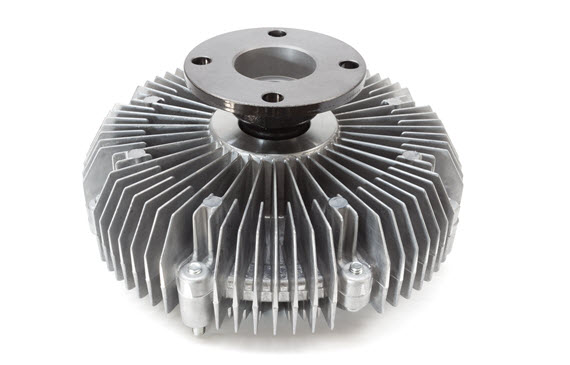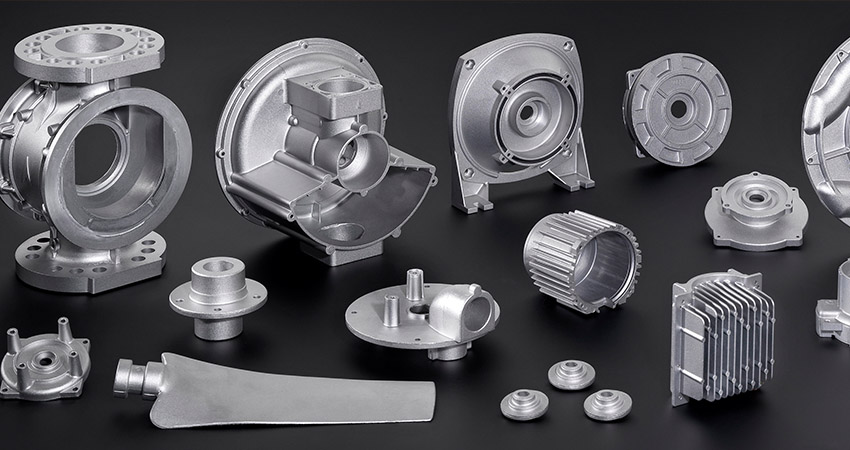How Metal Castings shape innovation in different industries
Discovering the Important Applications of Light Weight Aluminum Castings Across Different Fields
Light weight aluminum spreadings play a necessary duty in several markets. Their lightweight and durable attributes add to innovations in automobile and aerospace markets. Furthermore, they improve construction integrity and customer item design. As sustainability comes to be a priority, the environmental advantages of light weight aluminum spreadings better highlight their significance. Understanding the substantial applications of this product can expose insights right into modern manufacturing methods. What details developments are being made in these different markets?
Automotive Sector Innovations

In addition, aluminum castings play a vital function in electric automobiles, where weight reduction is paramount for battery efficiency. With the combination of aluminum in engine blocks, transmission real estates, and architectural components, car manufacturers can attain exceptional toughness while preserving peak performance. As the need for lasting and reliable automobiles expands, the automotive sector proceeds to embrace aluminum spreading advancements, positioning itself at the forefront of technological developments and ecological responsibility.
Aerospace Advancements
While the aerospace sector constantly seeks ways to enhance performance and performance, developments in light weight aluminum castings have arised as an essential consider achieving these goals. The light-weight nature of aluminum significantly adds to sustain efficiency, minimizing overall aircraft weight without compromising architectural integrity. Developments in casting strategies, such as die casting and investment casting, allow for complex layouts that enhance the rules of aerodynamics and performance.
Advancements in metallurgy have enhanced the toughness and corrosion resistance of light weight aluminum alloys, making them appropriate for numerous aerospace applications, consisting of engine parts and fuselage structures. The ability to create complicated forms minimizes the variety of components required, streamlining assembly processes and minimizing upkeep needs. As aerospace makers significantly transform to light weight aluminum castings, they are locating that these developments not just drive functional efficiency but additionally sustain sustainability objectives via minimized energy intake throughout flight.
Construction Applications
Aluminum castings play a pivotal duty in the building and construction industry, providing a mix of strength, toughness, and lightweight homes that enhance architectural stability. Metal Castings. These spreadings are made use of in a selection of applications, including window structures, door frames, and roof systems, where their resistance to rust and weathering is especially helpful. Light weight aluminum spreadings add to power effectiveness, as their lightweight nature minimizes the total load on frameworks, assisting in less complicated transport and setup.
Additionally, the convenience of aluminum allows for complex geometries and elaborate styles, conference visual needs without endangering structural efficiency. In seismic regions, light weight aluminum castings can be used in crucial architectural parts, giving significant advantages pertaining to flexibility and durability. Generally, using aluminum castings in building not just improves the performance of buildings but also supports lasting building techniques by enabling using recyclable materials in construction tasks.

Consumer Goods Production
In consumer goods producing, light weight aluminum spreadings play an important function in lightweight product style, permitting much easier handling and boosted effectiveness. Their improved sturdiness features contribute to the long life and dependability of day-to-day items. This mix of advantages makes aluminum a preferred product in the affordable durable goods market.
Light-weight Product Style
As makers increasingly prioritize effectiveness and sustainability, lightweight product design has actually become a critical aspect of durable goods advancement. The assimilation of aluminum castings allows designers to develop items that are not just lighter but also more energy-efficient. This decrease in weight adds to decrease transportation prices and improved user experience, as customers progressively seek easier-to-handle goods. Additionally, lightweight layouts help with cutting-edge aesthetics, allowing brands to separate themselves in an open market. The versatility of light weight aluminum permits intricate shapes and forms, boosting overall style freedom. As a result, light-weight item layout is ending up being necessary for firms intending to fulfill contemporary customer demands while adhering to environmental factors to consider. This fad is reshaping how products are conceived and produced across different sectors.
Improved Toughness Functions
While modern consumers demand items that are both lightweight and cosmetically pleasing, improved toughness functions have ended up being equally essential in durable goods producing. Light weight aluminum castings use remarkable strength-to-weight ratios, enabling manufacturers to create products that withstand daily wear and tear. The integral deterioration resistance of light weight aluminum guarantees that items keep their look and capability gradually, minimizing the requirement for regular replacements. Additionally, casting methods make it possible for the production of smooth styles that enhance architectural honesty. As an outcome, producers can supply durable goods that not just satisfy performance expectations but also provide long life. This emphasis on durability Recommended Reading not only enhances client satisfaction yet also lines up with sustainability goals by decreasing waste and advertising responsible usage.
Electric and Electronic Devices Market
The electrical and electronic devices field increasingly counts on aluminum spreadings for their light-weight, long lasting, and extremely conductive properties. These spreadings are important in producing numerous parts, consisting of housings, enclosures, and warm sinks. Their low thickness permits lowered general weight in digital gadgets, improving portability without endangering performance. Furthermore, aluminum's outstanding thermal conductivity is crucial for dissipating warmth generated by electronic parts, making sure excellent working and long life.
Aluminum spreadings give exceptional rust resistance, which is crucial for preserving electronic stability in different settings. The capability to develop complex shapes and complex layouts with casting strategies better supports development in product development, permitting makers to satisfy certain technical requirements. As the need for high-performance and energy-efficient electronic devices remains to expand, light weight aluminum spreadings are positioned as a key material, helping with innovations in modern technology throughout the industry. Their flexibility and reliability make them essential in the modern-day electric and electronic devices landscape.
Sustainability and Ecological Influence
Recognizing the expanding problem for ecological sustainability, the light weight aluminum spreading sector has actually made considerable strides in lowering its environmental footprint. The manufacturing of aluminum castings currently increasingly uses recycled products, reducing power consumption and basic material removal. This shift not just conserves resources yet also lowers greenhouse gas emissions connected with key aluminum manufacturing.
Additionally, improvements in modern technology have actually resulted in more effective spreading procedures, further reducing waste and boosting power efficiency. Lots of suppliers are taking on sustainable practices such as closed-loop systems that recycle water and minimize hazardous waste.
Moreover, light weight aluminum's light-weight nature enhances fuel efficiency in transportation industries, adding to lower discharges over the lifecycle of lorries. As the market remains to focus on and innovate sustainability, aluminum spreadings are poised to play a necessary role in promoting environmentally responsible practices throughout different fields, straightening with international initiatives to fight climate adjustment and promote sustainable advancement.
Often Asked Concerns
What Are the Advantages of Aluminum Castings Over Various Other Products?
Aluminum castings supply lightweight properties, superb deterioration resistance, and great thermal conductivity. Additionally, they make it possible for intricate designs, lower production prices, and supply boosted durability, making them advantageous contrasted to standard materials like steel or iron.
Exactly How Are Aluminum Castings Produced?
Light weight aluminum castings are produced with procedures like sand spreading, die spreading, and investment spreading. look here Molten aluminum is poured into mold and mildews, permitted to cool down, and afterwards got rid of, leading to precise and long lasting elements for various applications.
What Is the Typical Life-span of Aluminum Castings?
The normal lifespan of light weight aluminum castings ranges 10 to 50 years, depending upon ecological variables, usage problems, and alloy structure. Correct maintenance and care can greatly expand their toughness and efficiency in various applications.
Can Light Weight Aluminum Castings Be Reused?
Yes, aluminum castings can be recycled efficiently (Wisconsin Aluminum Foundry). The recycling process keeps the metal's properties, making it a sustainable alternative for various applications, as a result adding to ecological conservation and resource monitoring within numerous industries
What Industries Are Emerging for Aluminum Casting Applications?
Emerging markets for this link light weight aluminum spreading applications consist of electrical vehicle manufacturing, renewable resource sectors, aerospace improvements, and clinical modern technology. These fields leverage light weight aluminum's light-weight, sturdy properties to boost and innovate performance in different products and systems.
While the aerospace industry constantly looks for means to boost performance and efficiency, improvements in light weight aluminum spreadings have arised as a vital element in achieving these objectives. Light weight aluminum spreadings play a crucial function in the construction market, providing a combination of strength, sturdiness, and lightweight homes that boost architectural stability. In consumer items making, light weight aluminum castings play a crucial duty in lightweight item style, permitting for much easier handling and improved performance. The electrical and electronic devices market progressively relies on light weight aluminum castings for their lightweight, resilient, and highly conductive properties. Light weight aluminum castings are produced via procedures like sand casting, pass away casting, and financial investment spreading.